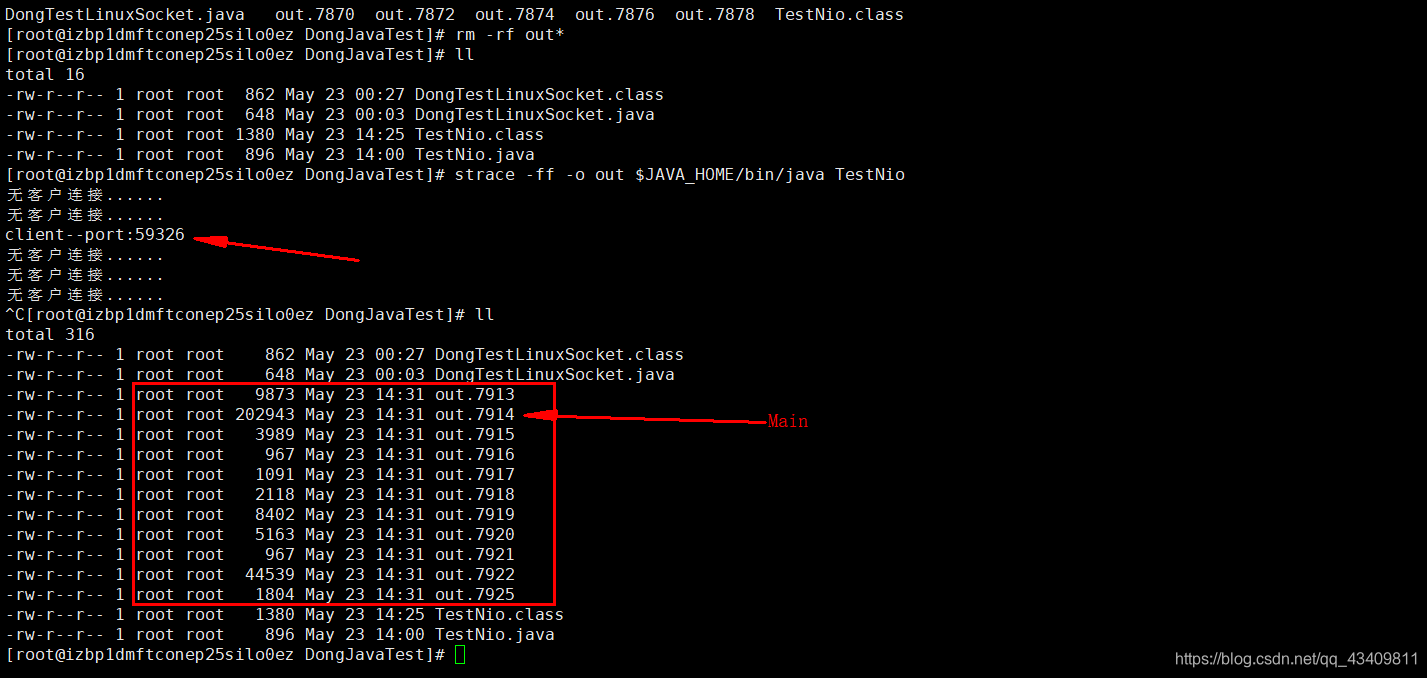网络编程 调用 操作系统底层知识
本文共 406 字,大约阅读时间需要 1 分钟。
需要有一定的BIO和NIO的基础和经验,方可读懂本文章
笔者懒,其中奥秘需自行领悟
-
编译.java文件

-
追踪并运行此文件,可以看到调用 操作系统的具体执行函数

-
有一个客户端连接后看看输出的日志

4.查看Main线程的日志



最终总结(epoll)
- 每次一开始先在操作系统里面开辟一个内核空间,用于存储需要监听的fd
- 在Java中向select.register()注册,就相当于向此内核空间里面存贮 对应的fd
- select.select() 就是操作系统的wait,等待看看哪些事件发生,返回对应的fd集合
poll中是通过轮询的方式看哪些事件是否发生,而epoll则是通过事件驱动的方式来监听事件是否发生,因此epoll效率会更高些
https://blog.csdn.net/wteruiycbqqvwt/article/details/90299610 (深入理解select、poll和epoll及区别)



你可能感兴趣的文章
netlink2.6.32内核实现源码
查看>>
Netpas:不一样的SD-WAN+ 保障网络通讯品质
查看>>
NetScaler的常用配置
查看>>
netsh advfirewall
查看>>
NETSH WINSOCK RESET这条命令的含义和作用?
查看>>
netstat命令用法详解
查看>>
Netstat端口占用情况
查看>>
Netty WebSocket客户端
查看>>
netty 主要组件+黏包半包+rpc框架+源码透析
查看>>
Netty 异步任务调度与异步线程池
查看>>
Netty中集成Protobuf实现Java对象数据传递
查看>>
netty之 定长数据流处理数据粘包问题
查看>>
Netty事件注册机制深入解析
查看>>
Netty入门使用
查看>>
Netty原理分析及实战(三)-高可用服务端搭建
查看>>
Netty原理分析及实战(四)-客户端与服务端双向通信
查看>>
Netty发送JSON格式字符串数据
查看>>
Netty和Tomcat的区别已经性能对比
查看>>
Netty基础—1.网络编程基础二
查看>>
Netty基础—3.基础网络协议二
查看>>